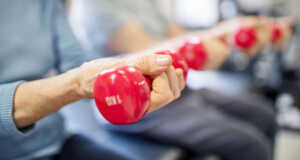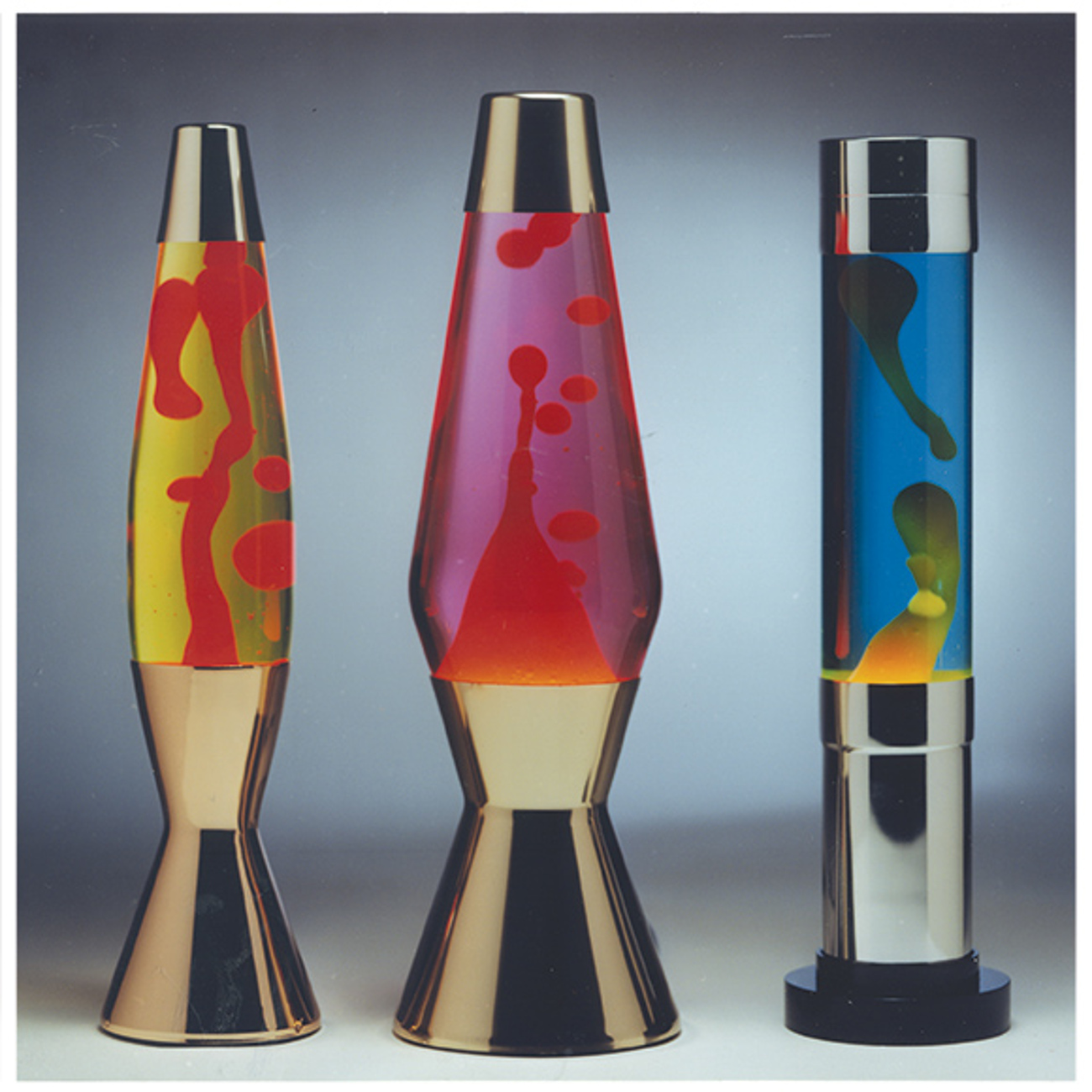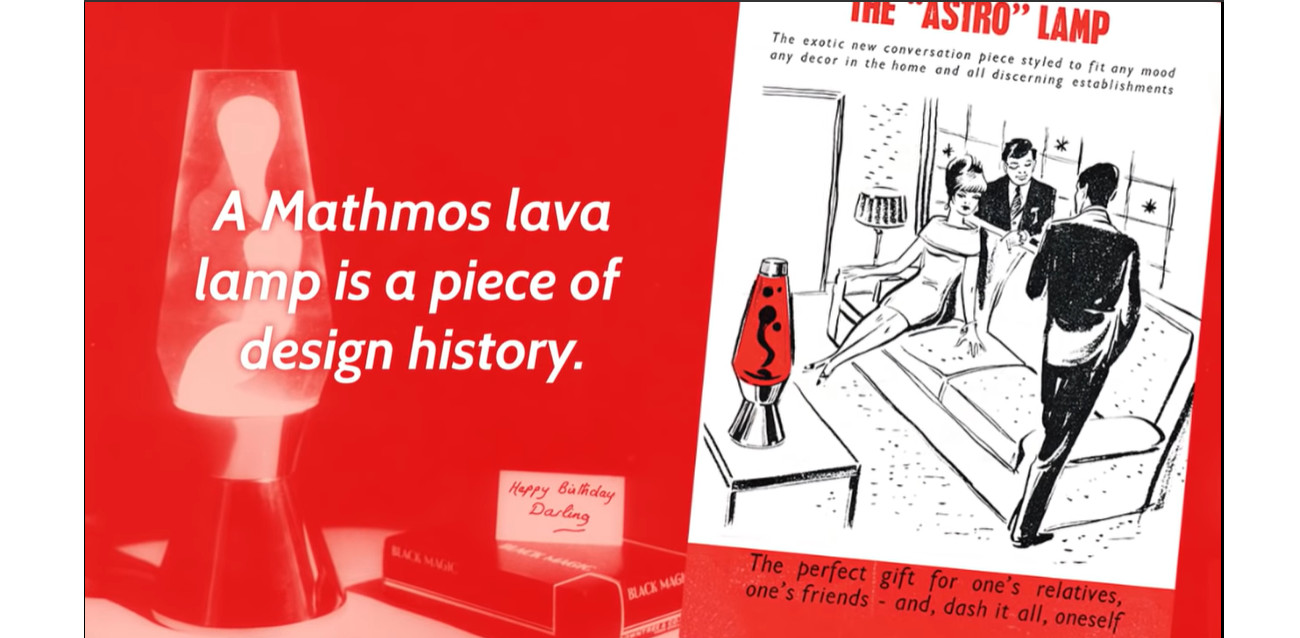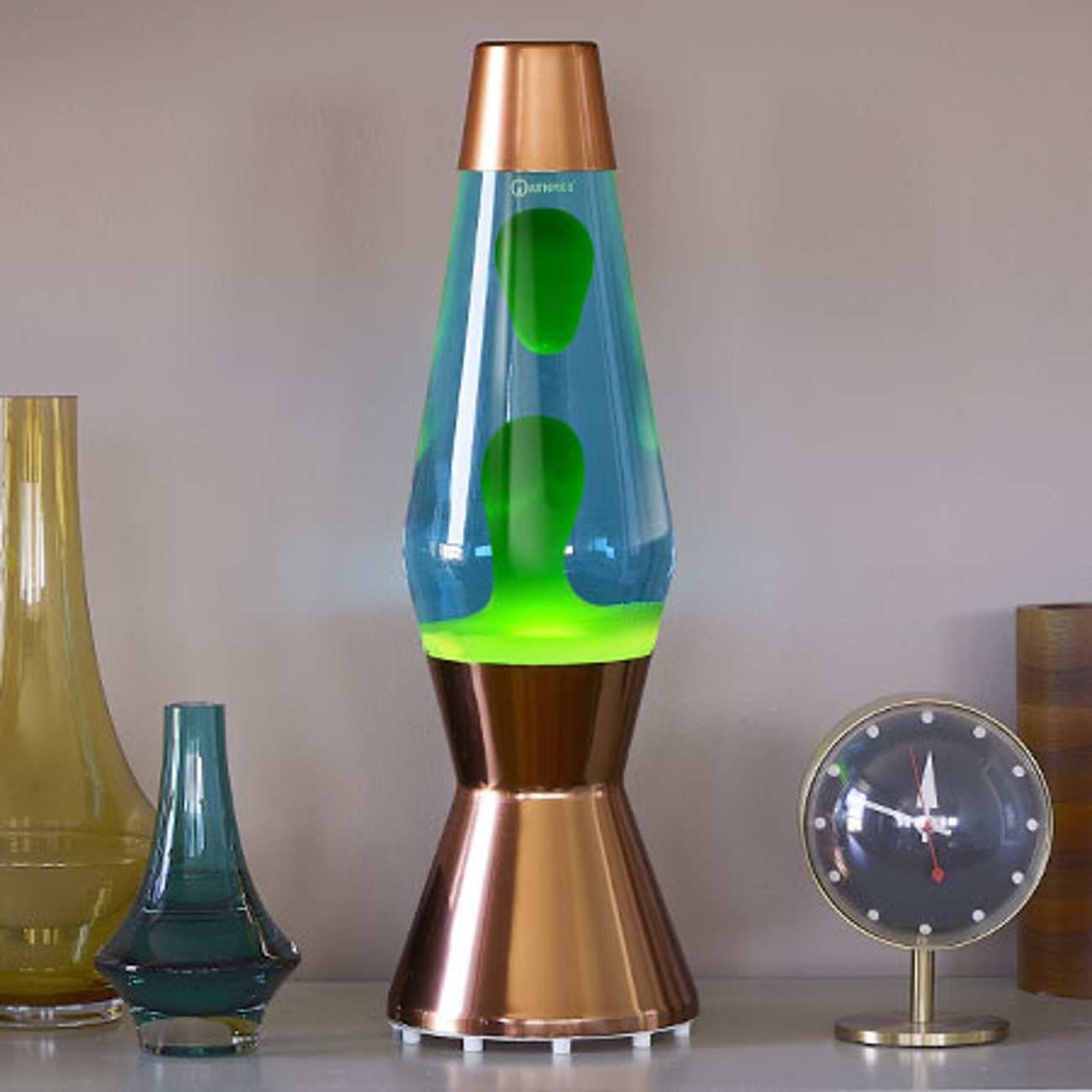You may have owned one, know somebody who had one, or maybe you’ve even seen them ironically in the media, but the Lava Lamp has crossed your path at some point. The Lava Lamp – originally called the Astro Lamp – is an emblematic symbol of the bygone psychedelic wave that hit the middle of the 20th century. But this groovy colorful light fixture wasn’t meant to be an eclectic decorative feature, it was created to become a ubiquitous item, commonplace like any desktop office supply piece and decorative household piece.
Lava Lamps, originally called Astro Lamps, were created by an eccentric British accountant named Edward Craven Walker. Inspired by a makeshift egg timer he saw at a bar, Craven Walker made his prototype from a cocktail shaker fastened together with scraps of metal. Quickly he created a smoother, more visually appealing finished product. According to Smithsonian, the production of the lamp commenced in 1963. It didn’t take long for the production to come stateside and the colorful lamps made their way to the United States by 1965. There only was one difference between the British version and the US version of the lamp – in the US the manufacturing was done under a company called Lava Lite.
The two factors that define the Lava Lamp are also the two factors that detract from it. The colors and shapes are reasons that make the lights far from timeless. The era of the 60s is that of exploration and experimentation. While the 1950s was far from drab, as confirmed by the BBC, the color palette was not edgy. As post-war supply chains converted military production into consumer manufactured goods, the pastels of the 1950s were uniform. You could purchase a car, kitchen cabinets, dress fabric, and even toilet paper in the same shades of soft blue, blush pink, buttercup yellow, and mint green. However, as the 1960s rolled around, the colors shifted up a notch. Hues were deeply saturated, tones almost painfully bright. Breaking the rules was a pinnacle to the landscape of the 60s, and the Lava Lamp fit right in with the lot of modern Italian designs that crafted the 60s style.
Looking at the advertisements of the Lava Lamp shows a much different story than the actual reality. The manufacturer’s advertisements did not show the “grooviness” and bohemian vibes we attach to the Lava Lamp today. One advertisement had mini Lava Lamps placed on the counters of posh couples tables at a chic metropolitan bar. The Lava Lamp snuck its way on a fireplace mantel in another advertisement. It even showed up around a group of suburban housewives crowding around a living room coffee table. All of these advertisements wanted to display the Lava Lamp’s versatility. It was meant for the everyday consumer and stressed that the lamp could be used in urban settings as well as homey country environments.
As ubiquitous as the company advertised the Lava Lamp to be, marketing only went so far. The downfall to the Lava Lamp’s everyday use was due primarily to its functionality, or rather, lack thereof. In terms of lighting, the Lava Lamp does little to cast a strong or bright light. Since the Lava Lamp wasn’t a strong light source, people would have to rely on a traditional light fixture and use the Lava Lamp as a secondary lighting source. The colorful hues of the lava itself further detracted from the lamp’s functionality (green and purple light doesn’t cut it for knitting or typing).
The Lava Lamp’s slow meandering bubbles and dim light harkened back to primitive fire circles, communal gatherings, almost ritualistic in their origin. It is here, in these sort of group-like environments, that the Lava Lamp’s popularity soared. The light fixture easily got popular with the crowds that loved that psychedelic counterculture.
As the decades passed, the popularity of the Lava Lamp never got to everyday status. The groovy lamp remained as a fringe item, trendy within niche pockets of society. Yet even to this day, you can get this piece of nostalgia. Lava lamps are still in production by the original British manufacturer to this day. They still offer replacements for the original models and continue to make reproductions of their most iconic lamp.

















